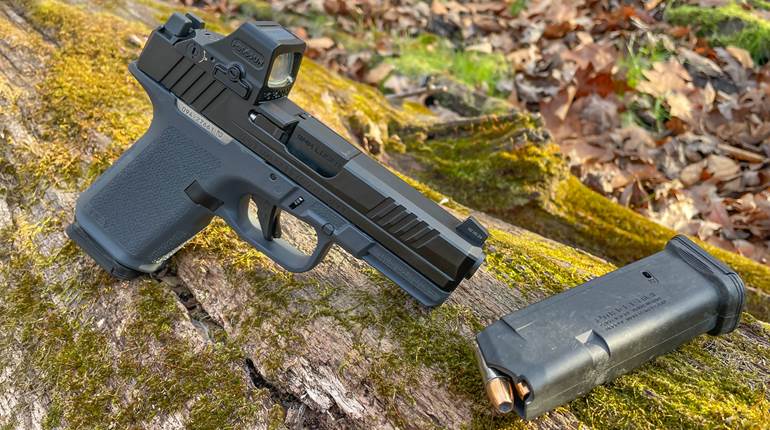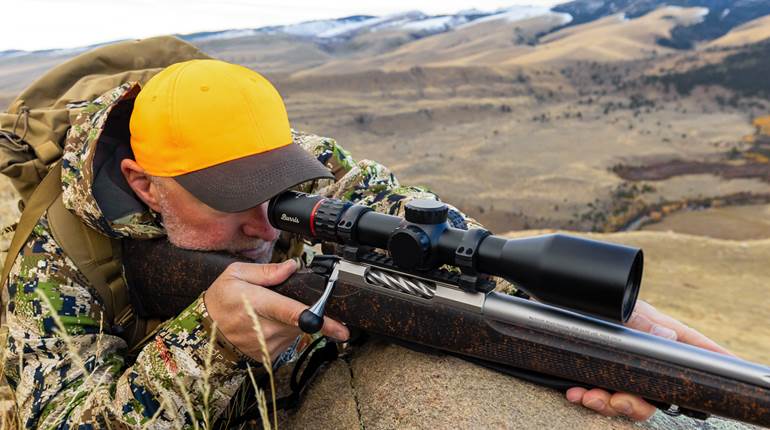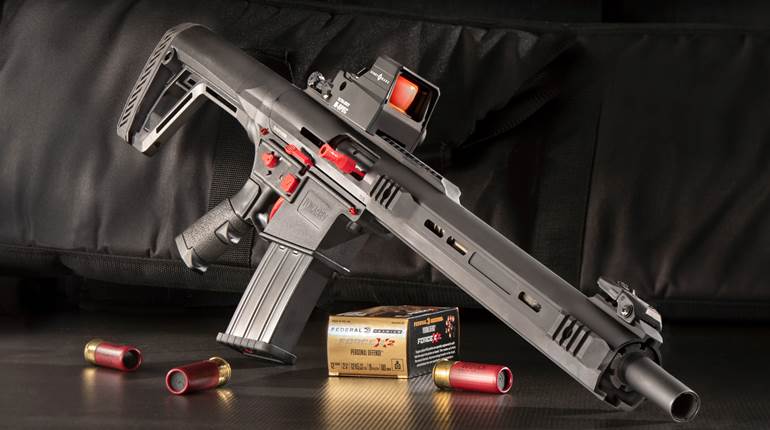
Looking for a new-to-you shotgun? When considering action type, models (variances) and manufacturers, there’s a seemingly endless selection from which to choose. While many buyers ultimately swipe the plastic for a semi-automatic or pump-action—greater capacity is better, right—a twin-tubed shotgun could be the best solution. But narrowing down the fields of side-by-side and over-under shotguns can be daunting. How do you know which twin-barrel configuration is right for you, and why should you go this route instead of the other shotgun types?
The Basics
There is beauty in simplicity and redundancy, and those are the hallmark of dual-barrel shotguns. For instance, unlike their semi-automatic and pump-action brethren, side-by-sides (a.k.a. “double barrels”) and over-unders are fundamentally adjoined single-shots. Why should you care? Foremost, the independent firing mechanisms permit a speedy second shot if the first fails—something that repeating shotguns cannot offer—or a follow-up is needed. There’s no need to manually cycle the action (or, in the case of a semi-automatic, for it to cycle itself) to do so, either. Consider the advantages in the field and on the clay course, where multiple targets are commonplace.

Additionally, absent an action relying on a reciprocating bolt—and attendant lengthier receiver, such as employed in repeaters—the result is a shotgun with a shorter overall length—even when an extended barrel is used. Improved handling and ease of transport are a pair of upshots. What’s more, with two barrels available, a different choke constriction can be utilized in each and the best sequence selected for the scenario. The benefit of this for hunting and most clays games—especially sporting clays—cannot be underestimated. You can even utilize sub-gauge tube sets, such as those from Briley Mfg., Inc., in your “double” or “stacked barrel” to expand your opportunities.

Naturally, there are drawbacks to the twin-barrel design, and the first is obviously the lack of a third shot. Sure, this can make a difference for hunting and self-defense, but not on a clays course, where only two shots are permitted, with rare exceptions. Quality, dual-barrel shotguns are also costlier to make, and that increase is passed along to consumers. Why? Said shotguns are, at least in places, hand fit, rather than a rapid assemblage of parts, and the barrels need to be regulated. Some aren’t. And, those two barrels logically weigh more than one, so increased weight can be expected.
Lastly, without an action to cycle, such as with semi-automatics, the recoil impulse is directed straight into the user’s shoulder, thereby increasing fatigue in high-volume shoots. This is somewhat offset by their heft. Given the pluses of twin-barrel guns—especially for competition—it makes sense that they’re popular. Now the question is, “Which one is right for you?”
Weighing the Options
Which dual-barrel design is best suited for you is purely a matter of preference. Here’s why: although you don’t “aim” a shotgun, per se, outside of its bead(s) your eyes do take in what’s in the periphery. It could be argued that, with the double-barrel shotgun, the converging tubes help guide the eye to the bead, or are distracting. Perhaps neither. For me, when shooting both eyes open, as you should, it’s the latter; it’s beyond the bead where my attention is focused, so the configuration isn’t bothersome. Having “cut my teeth” on semi-automatic and pump-action shotguns, which have a single barrel (and thus less in the periphery), I prefer the stacked-barrel arrangement of the over-under. Again, it’s whatever “fits” you. The only way to determine that is to shoulder them both.

The same, no-one-size-fits-all approach holds true of the shotguns. Do you have a fondness for tall and narrow (over-under) or low but wide (side-by-side)? Conceived of as hunting pieces, the double barrels typically have a narrower fore-end, which, depending on hand size, may require the fingers to curl around and onto the barrels for a secure hold. Can this be distracting? Sure. Due to the larger fore-ends required to surround the lower barrel of an over-under, it’s a non-issue with that shotgun type. It must be noted that the barrels of the side-by-side do reside higher in the stock, which slows the follow-up shot due to muzzle flip. That’s why most competitive clay shooters utilize stacked-barrel shotguns and fire the bottom one first.

Both side-by-side and over-under shotguns can be of the box-lock or side-lock type, though the latter is rarer due to the much higher cost of manufacture—time is money. Double barrels can also be had with external hammers. The location of the hammers and type of lockwork is mostly inconsequential, save for trigger dynamics.
The triggers designs differ greatly. Double barrels typically (but not always) employ two triggers, with the front firing the right barrel and the rear discharging the left. Since the barrels often have fixed chokes of varying constriction, the ability to instantaneously choose the proper choke for the situation is clearly beneficial. So is being able to continue hunting should one lock (and thus trigger) fail when afield.

The single trigger of over-unders, on the other hand, requires that a barrel (and thus choke) be selected in advance. This is performed via a barrel selector integrated into the tang-mounted safety or as a separate unit near the trigger. Its location and design vary by manufacturer. If the target’s distance and route of travel is known, this is a moot point; conversely, it can be damning if it’s not—an incorrect choke could be used. Unlike the dual triggers of the side-by-side, the single one of an over-under provides no back up. Sure, a mechanical trigger (as opposed to inertia) can permit a second attempt after a non-firing barrel, but if the trigger is broken, the gun is rendered a paperweight.
Innovation and Variety
Given the increasing popularity of clays sports and registered tournaments, and the increased use of stacked barrels in general, it makes sense that’s where manufacturers innovate. Nowadays, over-unders can be had in nigh every imaginable configuration, ranging from standard, no-frills field models to those tournament-winning ones with fully adjustable buttstocks (comb, cast, and length of pull) and triggers, as well as a variety of barrel lengths with porting or not. They are also available with different and multiple beads, interchangeable chokes, and, in 12-ga., chambers up to 3 1/2”, though that’d be less than pleasant in large doses. Most large-scale gun makers offer at least one over-under model, though most, such as Browning, Blaser, Beretta, Krieghoff and others offer them in abundance.

Newly made side-by-sides are, almost without exception, designed for hunting, or “coach guns,” which can be employed for competition (cowboy action shooting) or defense. When compared to over-under shotguns, double barrels are rather limited in variety and, in the case of the latter, usually wear shorter than normal barrels. They also have limited user adjustability, including chokes, though this is more prevalent in sub-gauge models. Fortunately, companies such as Stoeger, CZ USA and others are modernizing the classic design.

Ultimately, for the low-volume shooter or one who desires nostalgia above all else, side-by-sides from yesteryear (deemed safe by a trusted gunsmith) and newly manufactured ones are as capable game-getters as ever, and they’ll allow you to compete in registered double-barrel-only NSCA events, too. Since they’re produced in lower numbers, expect to pay a premium. Conversely, if you opt for an over-under, the choices are extensive, and there are many advantages. If you’re even remotely considering competing, spend the money up front to get a quality piece with maximum adjustability. As Aldo Gucci said, “Quality is remembered long after price is forgotten.”
Although they are foundationally similar, over-under and side-by-side shotguns are quite different. Which one is most appropriate for you depends on your needs and preferences. Begin your decision-making at the gun counter.






































